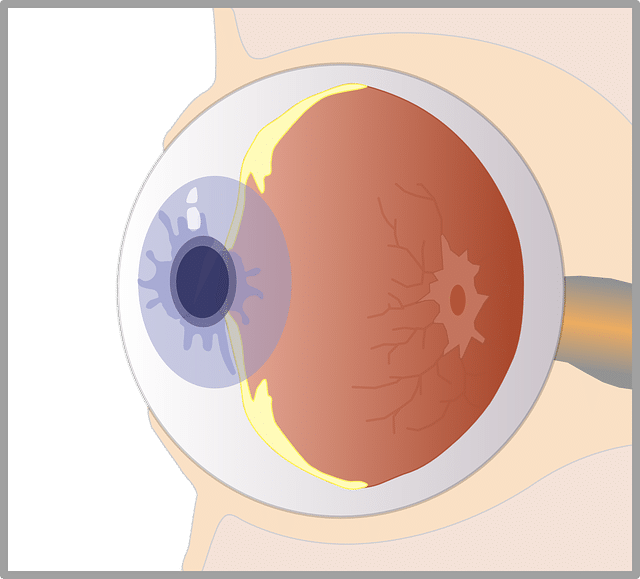Lasik NYC at Diamond Vision: Addressing Myths & Misconceptions
It’s natural to have questions and concerns before committing to surgical intervention including a procedure like laser eye surgery or Lasik. The proper way to get the right answers is to reach out to an experienced board-certified surgeon who can ease any fears during a consultation.
Professionals at Lasik NYC at Diamond Vision explain the procedure, assess your specific needs, and determine whether your condition can be treated with Lasik. When well informed and prepared with what to expect, you can more readily make the most suitable decision for you.
Understand The Facts Before Committing to Lasik
Lasik has been a trusted and safe laser eye surgery for over 20 years; however, the intervention is still fraught with myths and misconceptions. Whether performing internet searches or obtaining feedback from close friends and family, details can become contradictory and confusing.
Misinformation can deter people from taking advantage of a life-changing vision treatment. By scheduling a consultation with a quality and qualified surgeon at Lasik NYC at Diamond Vision, you can address the fears in order to move forward with a positive mindset.
Visit – What is LASIK? | FDA – to learn about Lasik laser eye surgery. Consider a few myths many people struggle with as they try to decide if Lasik is right for them.
The pain
A common misconception that leads to hesitation in having Lasik is the idea that the surgery is painful. In fact, anecdotally, more people report that the process is a comfortable one. The eyes are numb throughout the procedure using anesthetic drops.
The surgeon advises that you will feel a brief slight pressure that could last several seconds, but pain is not part of the process. After surgery, some people have reported mild discomfort such as irritation or dry eyes, which typically resolves in a few days
By following the practitioner’s post-operative instructions and using eye drops, you can enjoy a positive and smooth recovery process. Read here for details on what to expect with your surgical intervention.
The effects
Some people are concerned that the effects are temporary and not long-term. In fact, when the surgeon performs Lasik, the cornea is reshaped to correct vision impairments such as nearsightedness, farsightedness, and astigmatism. As age progresses, however, the eyes go through natural changes.
The condition is referred to as presbyopia, leaving clients to require vision aids such as reading glasses. The Lasik procedure has no bearing on age-related changes. Many people enjoy clear vision from the surgery for decades following the intervention.
The surgery has been successfully performed for decades with millions of clients worldwide undergoing the procedure. The satisfaction rate is the highest of any medical procedure and studies attest to its safety and success.
The risks
While all surgeries have a degree of risk, the idea that Lasik is risky can be readily debunked. The American Refractive Surgery Council reports that 99+ percent of clients achieve better than 20/40 vision and over 90 percent achieve 20/20 vision or better.
Severe complications such as vision loss are rare. The risk of serious complications is below 1 percent. The suggestion is that clients are more likely to develop severe infection while wearing contacts than following the intervention Dry eyes and glare are common effects following surgery, but these subside over time.
The priority is to be selective when comparing experienced board-certified surgeons like those in New York City at Diamond Vision. You must also pay attention to the pre- and post-operative guidelines to significantly reduce the risks.
Age restrictions
A myth that follows laser eye surgery like Lasik is that clients must be over 30 to undergo the procedure. There are many variables to determine where a client meets the criteria, but age restrictions don’t apply. The exception is that clients must be over the age of 18.
This is due to the eyes still developing; otherwise, adults of all ages benefit from the intervention. Surgeons expect that your vision (and prescription) will be stable for at least a year. The practitioner will perform a thorough assessment to determine if the procedure is suitable for your particular circumstances.
While not all people will be candidates, there are other solutions that can yield great results and may be a more suitable fit for your situation.
The flap

When performing laser eye surgery, the practitioner will create a tiny flap within the cornea. This flap will be flipped up to expose deeper tissues and then will be replaced to cover the entire surgical area. In most cases, the flap heals in roughly three months.
Some people hesitate to have surgery with the thought process that this flap does not heal. In fact, corneal tissues heal very quickly, as does the flap created with surgical intervention.
The recovery
Many prospective clients are under the impression that the recovery process for the surgery is long and complex. Many people report returning to their normal daily activities after roughly 48 hours. You want to avoid swimming and strenuous exercise according to post-operative instructions.
The surgeon will provide detailed guidelines to follow according to your needs and lifestyle. Many patients are disbelieving albeit thrilled at how rapidly their vision improves following the surgery. `
The skill
The idea that you don’t need to be concerned with the practitioner you choose because the laser does all the work is a major myth. In fact, the surgeon’s level of expertise and solid skill set is extremely important. The laser system requires programming as a sophisticated and complex tool.
The surgeon’s extensive knowledge and experience guide patient’s care before, during, and following surgery to achieve the most effective and successful results. The pre- and post-surgical instruction are integral to the best outcome. Surgeons work closely with clients’ eye doctors.
These professionals are most familiar with your eyes and will continue caring for them well into the future. You want a solid team including the surgeon, techs, and your eye doctor to collaborate as a team for a quality surgical procedure. The laser is a tool, but these professionals are essential.







